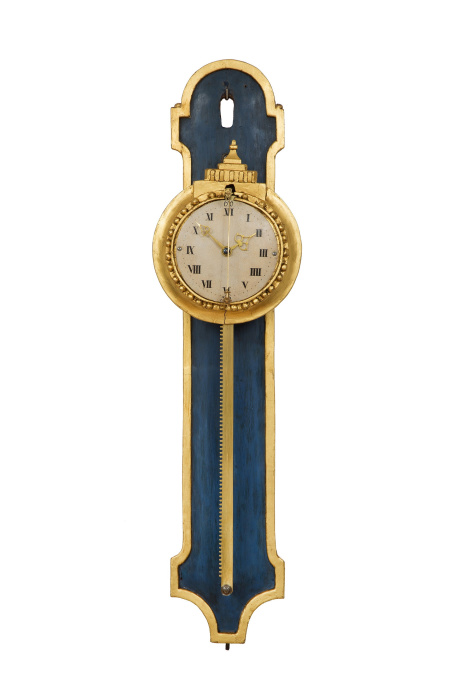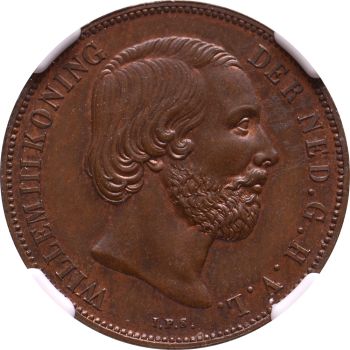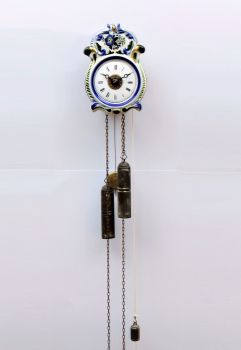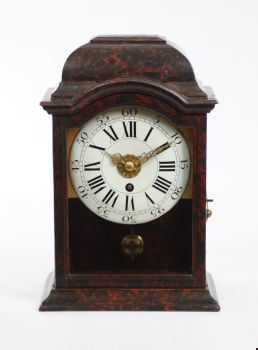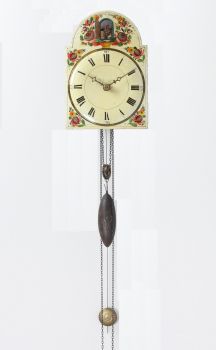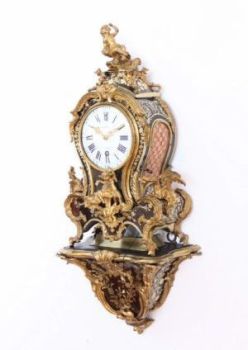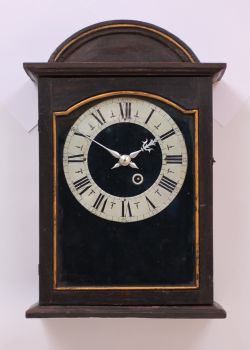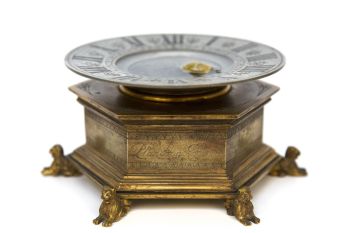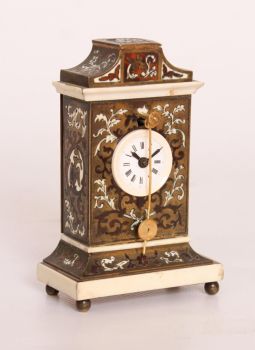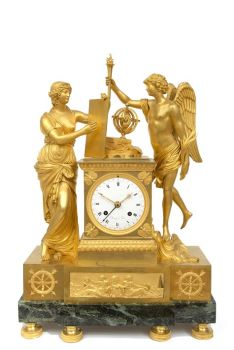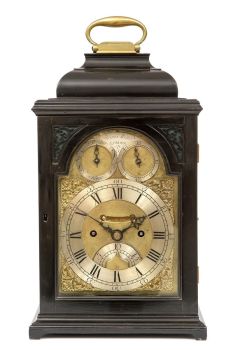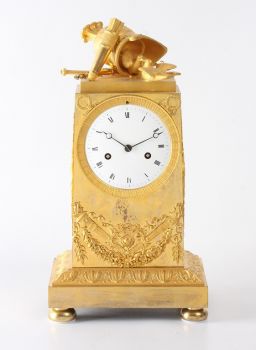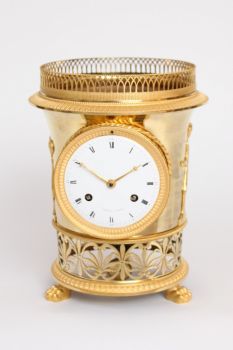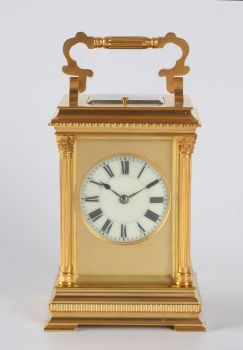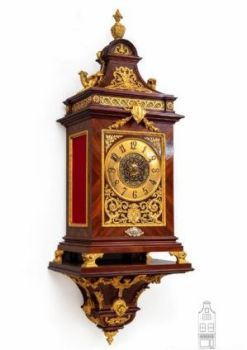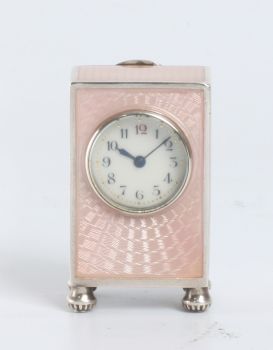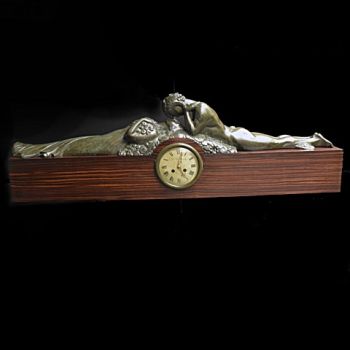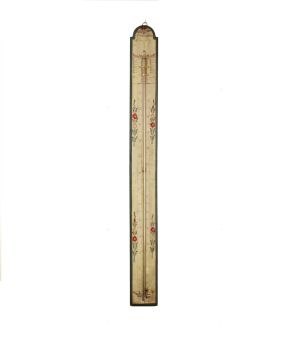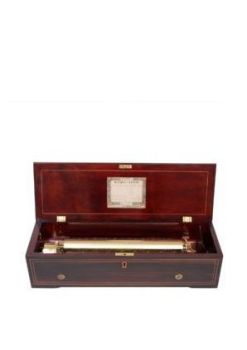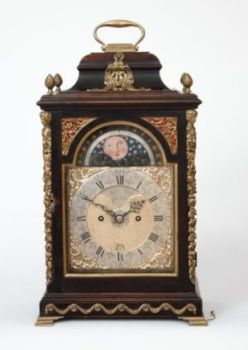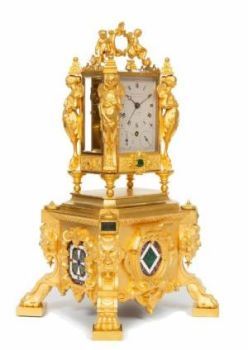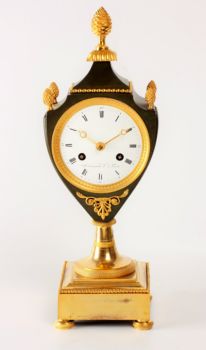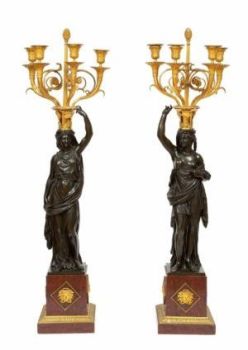A South German Louis XVI polychrome and parcel gilt rack wall timepiece, circa 1780 1780
Artista Desconocido
63.50 ⨯ 12 ⨯ 11 cm
€ 16.000
Gude & Meis Antique clocks and Music Boxes
- Sobre la obra de arte10.7-cm painted dial with Roman numerals and pierced brass hands, 30-hour movement with verge escapement and front pendulum, driven by its own weight along the rack, parcel gilt bezel and cresting, shaped polychrome and parcel gilt back board.
Most clocks have a movement that has an energy source like a mainspring or a weight to drive the clock. Besides that the movement needs a regulating part that makes sure that the energy is released regularly. Without it the hands would spin around uncontrollably until the spring would have wound down or the weight reaches the floor. The amusing part this clock is that the movement and dial are used as a weight itself. By engaging with the teeth on the ‘rack’ the wheels of the movement can turn. One can simply ‘wind’ the clock by pushing the whole back up the rack. Another amusing part of this clock is the front pendulum. This South German and Alpine tradition is called ‘Kuhschwanz Pendel’ which translates into ‘Cow tail pendulum’. This is not surprising because the pendulum swing like the tail of a cow in front of the dial. Many people are fascinated by the movement slowly descending down the rack while running. A beautiful object that will be a conversation piece for anyone who sees it for the first time. - Sobre el artista
Puede suceder que un artista o creador sea desconocido.
Algunas obras no deben determinarse por quién está hecho o por (un grupo de) artesanos. Algunos ejemplos son estatuas de la Antigüedad, muebles, espejos o firmas que no son claras o legibles, pero también algunas obras no están firmadas en absoluto.
También puedes encontrar la siguiente descripción:
•"Atribuido a …." En su opinión, probablemente una obra del artista, al menos en parte.
•“Estudio de….” o “Taller de” En su opinión, una obra ejecutada en el estudio o taller del artista, posiblemente bajo su supervisión
•“Círculo de…” En su opinión, una obra del período del artista que muestra su influencia, estrechamente asociado con el artista pero no necesariamente su alumno.
•"Estilo de …." o “Seguidor de…”. En su opinión, una obra ejecutada al estilo del artista pero no necesariamente por un alumno; puede ser contemporáneo o casi contemporáneo
•"Manera de …." En su opinión una obra al estilo del artista pero de fecha posterior
•"Después …." En su opinión, una copia (de cualquier fecha) de una obra del artista
•“Firmado…”, “Fechado…” o “Inscrito” En su opinión, la obra ha sido firmada/fechada/inscrita por el artista. La adición de un signo de interrogación indica un elemento de duda.
•“Con firma…”, “Con fecha…”, “Con inscripción…” o “Lleva firma/fecha/inscripción” en su opinión la firma/fecha/inscripción ha sido añadida por alguien que no es el artista
¿Está interesado en comprar esta obra de arte?
Artwork details
Related artworks
Artista Desconocido
Set Franse Empire Pendules / Empire Lectura penduleearly 19th
Precio a consultarKuipers Kunst & Antiek
1 - 4 / 12Artista Desconocido
Een Gotische zuidelijke Nederlanden wandklok1580 - 1590
Precio a consultarNico van den Assem restauratie
Artista Desconocido
Een Gotische zuidelijke Nederlanden wandklok1580 - 1590
Precio a consultarNico van den Assem restauratie
Artista Desconocido
A Surinam-themed Amsterdam long-case clock1746 - 1756
Precio a consultarZebregs & Röell - Fine Art - Antiques
 curada por
curada porGallerease Magazine
1 - 4 / 24- 1 - 4 / 12

